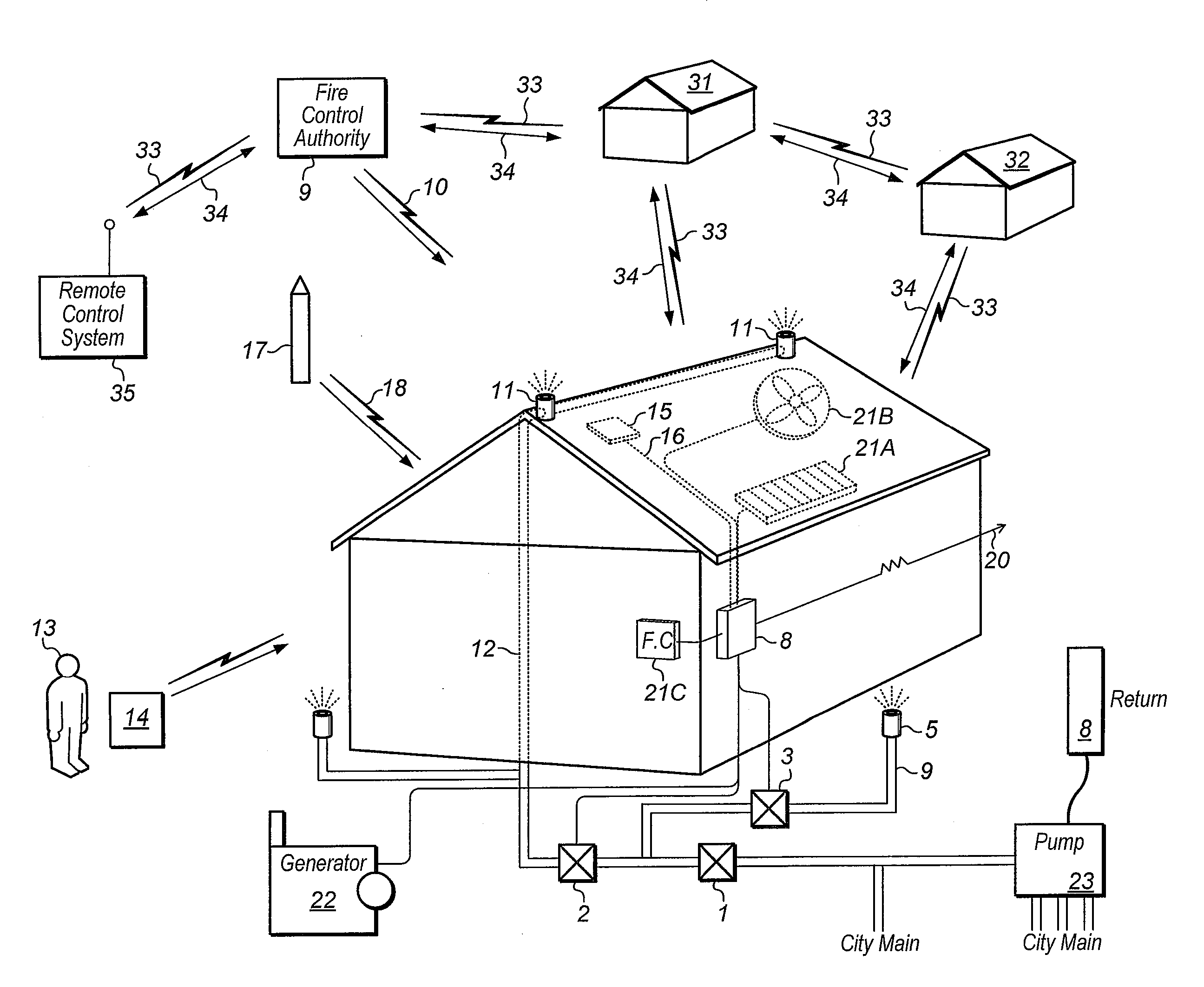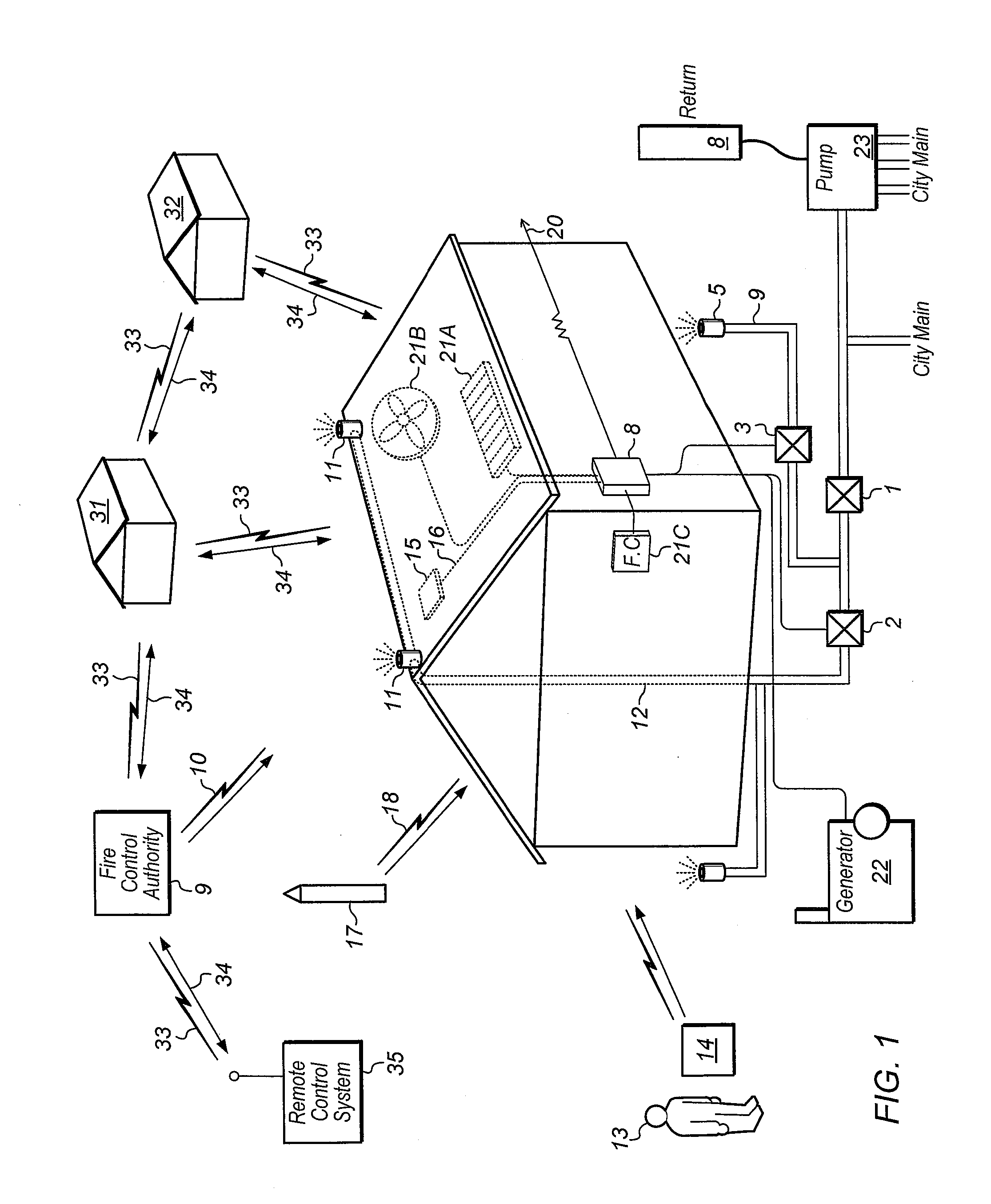Remotely controlled fire protection system
a fire protection system and remote control technology, applied in the direction of flow control using electric means, ratio control, instruments, etc., can solve the problems of reducing effectiveness, many buildings being threatened, and reducing so as to maximize the amount of water hitting, increase the effectiveness of fire protection systems, and comprehensive and accurate fire fighting strategies
- Summary
- Abstract
- Description
- Claims
- Application Information
AI Technical Summary
Benefits of technology
Problems solved by technology
Method used
Image
Examples
Embodiment Construction
[0033]With reference now to FIG. 1, a new fire protection system for buildings using remote control embodying the principals and concepts of the present invention and generally designated by the reference numeral 8 will be described.
[0034]As best illustrated in FIG. 1, fire control system 8 generally includes a building with at least one water or misting nozzle 11 mounted on the house or in the ground spraying the side and roof of the structure, supplied with water via piping 12 controlled by manual valve 1 further controlled by water valve 2. In one embodiment Water valve 2 is controlled via wireless connection to the fire control system 8. In another embodiment water valve 2 is connected to the fire control system 8 with a wire or cable 6. Water valve 3 controlled by fire control system 8 allows water to flow via piping 4 to sprinkler nozzle 5. In one embodiment fire control system 8 is activated by heat sensor 15 via a wire or cable 16.
[0035]In one embodiment perimeter sensor 17 ...
PUM
 Login to View More
Login to View More Abstract
Description
Claims
Application Information
 Login to View More
Login to View More - R&D
- Intellectual Property
- Life Sciences
- Materials
- Tech Scout
- Unparalleled Data Quality
- Higher Quality Content
- 60% Fewer Hallucinations
Browse by: Latest US Patents, China's latest patents, Technical Efficacy Thesaurus, Application Domain, Technology Topic, Popular Technical Reports.
© 2025 PatSnap. All rights reserved.Legal|Privacy policy|Modern Slavery Act Transparency Statement|Sitemap|About US| Contact US: help@patsnap.com


